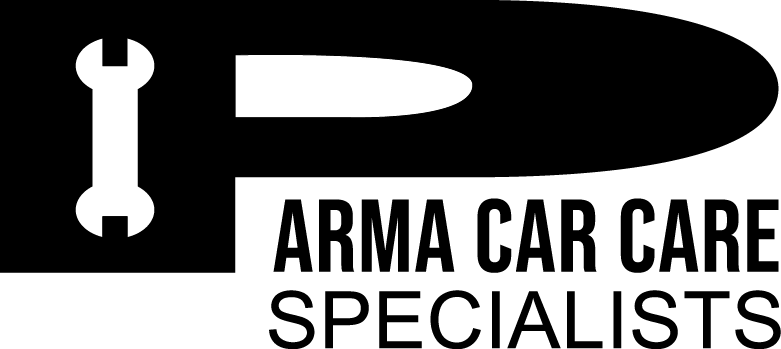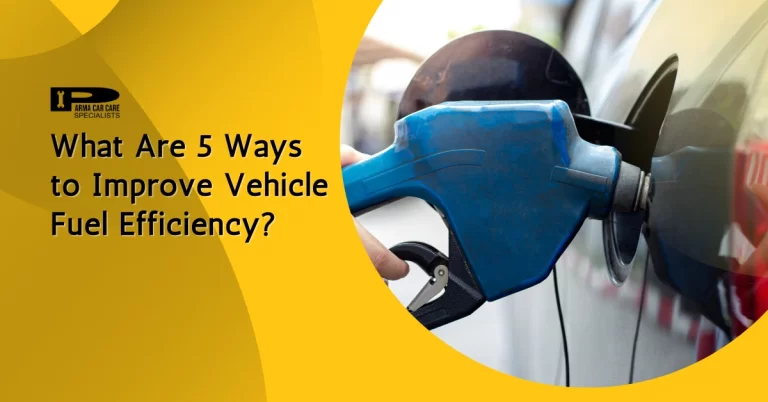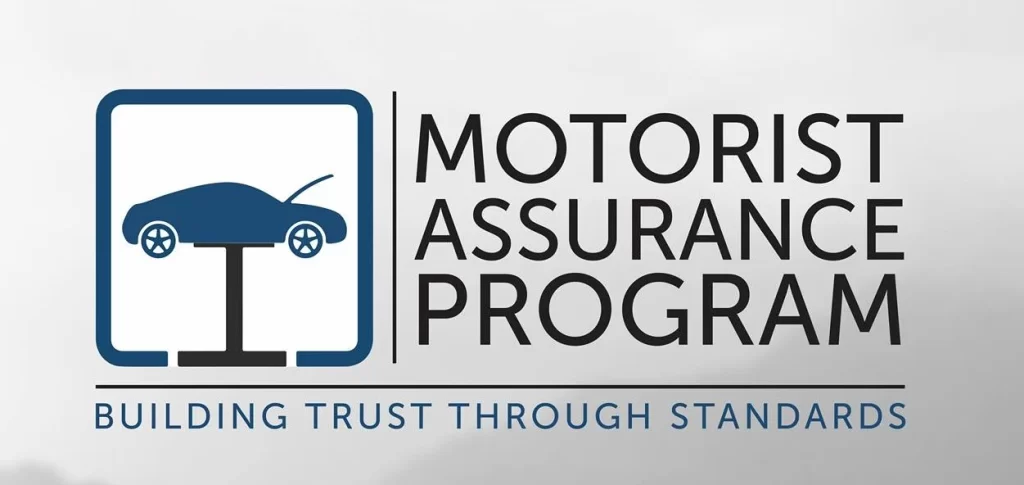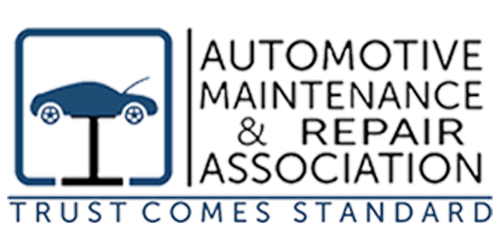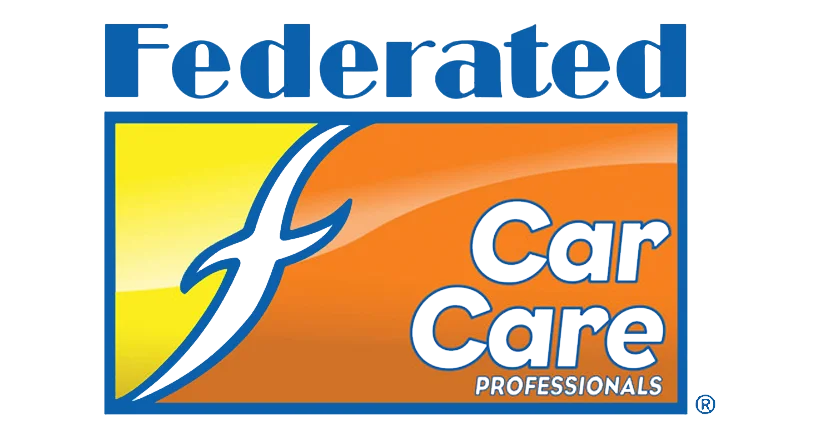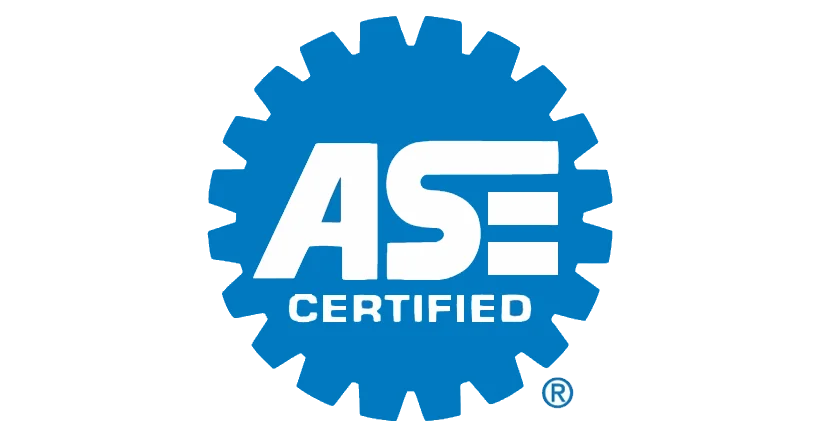If you’re running a fleet service business, regular maintenance of the vehicles is crucial. In particular, preventive maintenance plays a vital role in ensuring your fleet vehicles’ smooth operation and longevity.
In this regard, developing a comprehensive preventive maintenance plan can help avoid unexpected breakdowns, reduce repair costs, and enhance overall fleet performance. By implementing a proactive approach to maintenance, you can minimize downtime, maximize vehicle reliability, and optimize the productivity of your operations. Doing so improves your vehicles’ reliability, ensures compliance with industry regulations, and enhances overall safety for your drivers and the public in general.
What Is Fleet Service?
Fleet service refers to a specialized business model that involves managing, maintaining, and operating a fleet of vehicles for various purposes. This can include commercial fleets that respond to delivery and logistics requirements. It can also include government or municipal fleets normally used for public service work such as transportation, waste management, or emergency response.
Fleet service providers can offer comprehensive solutions to ensure the smooth functioning of vehicles, including their acquisition, maintenance, fueling, driver management, and fleet optimization. When fleet management is outsourced to a service provider, businesses can focus on their operations while benefiting from expert knowledge, efficient vehicle maintenance, and cost-effective operations.
What Is Fleet Preventive Maintenance?
Fleet preventive maintenance involves a systematic and scheduled inspection, servicing, and repair of vehicles before issues arise. This approach allows fleet managers to address potential problems early on, preventing these from escalating into major and costly repairs.
It typically includes fluid checks and replacements, tire inspections and rotations, brake servicing, electrical system checks, and engine maintenance. By adhering to a well-designed preventive maintenance plan, fleet service businesses can effectively identify and address issues related to critical vehicle components.
How Often Is Preventive Maintenance Required on a Fleet Service?
The frequency of preventive maintenance required on a fleet service can vary depending on the type of vehicles involved, their usage patterns, and the manufacturer’s recommendations. Additionally, mileage, operating conditions, and the type of equipment used may influence the maintenance frequency recommendations.
Generally, however, fleet vehicles undergo preventive maintenance at regular intervals to ensure optimal performance and minimize the risk of breakdowns. The specific intervals can range from monthly to quarterly, biannually, or annually, depending on the fleet’s needs and industry standards. So, fleet managers must establish a maintenance schedule based on these considerations, considering the manufacturer’s guidelines, the fleet’s historical data, and existing regulatory requirements.
Advantages of Having a Fleet Preventive Maintenance Plan
When you have a fleet preventive maintenance plan in place, you can expect to gain the following benefits:
1. Increased Vehicle Reliability
A preventive fleet maintenance plan focuses on regularly inspecting and servicing fleet vehicles. This can help identify potential issues while they are still in the early stages and resolve them quickly. As a result, business owners have the assurance that their vehicles will remain reliable and available for operation.
2. Extended Vehicle Lifespan
Proper maintenance can significantly extend the life span of your fleet of vehicles. Regular checks, timely repairs, and component replacements prevent excessive wear and tear. They preserve the integrity of the vehicles and allow them to remain in service for a longer period.
3. Cost Savings
Implementing a preventive maintenance plan regularly can lead to substantial business savings in the long run. When minor vehicle issues are addressed early, you can prevent them from escalating into extensive and expensive repairs. Additionally, regular maintenance helps optimize fuel efficiency and reduces the risk of vehicle component failures. Ultimately, this can help lower overall maintenance and operational costs.
4. Improved Safety
Fleet preventive maintenance plays a crucial role in ensuring the safety of your drivers, passengers, and the general public. Well-maintained vehicle components, such as brakes, tires, and electrical systems, greatly reduce the chances of accidents caused by equipment failures. Regular inspections also allow for identifying and rectifying safety hazards before they become serious risks on the road.
What Are the Steps Included in a Fleet Preventive Maintenance Plan?
When drafting a preventive maintenance plan for your fleet of vehicles, the following actions should be included:
1. Create a maintenance schedule.
Develop a comprehensive schedule that outlines when each vehicle in the fleet should undergo maintenance and inspection. Ideally, the schedule should consider mileage, usage patterns, manufacturer recommendations, and regulatory requirements.
2. Check or replace vehicle fluids.
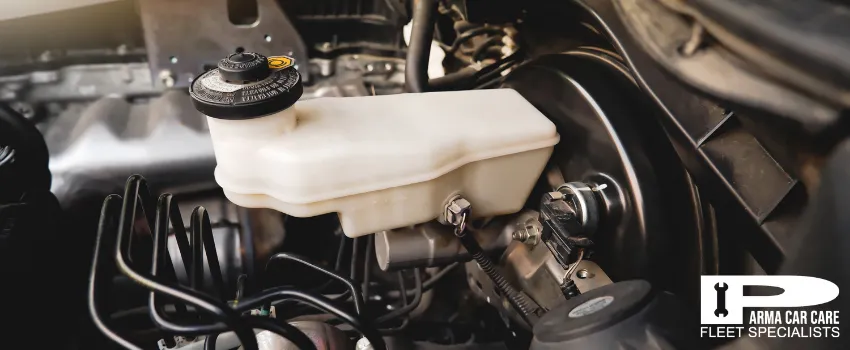
There should be regular inspections and, when needed, replacement of fluids such as engine oil, coolant, transmission, brake, and power steering fluids. Maintaining proper fluid levels and quality is essential for optimal vehicle performance and longevity.
3. Maintain and rotate the tires.

Monitor tire pressure, tread wear, and alignment regularly. Rotate the tires at recommended intervals to ensure even wear and maximize their usability and life span. Proper tire maintenance also helps promote fuel efficiency, better handling, and safety.
4. Inspect and service the brake system.
Conduct routine inspections of the brake components, including the brake pads, rotors, calipers, and brake lines. Perform necessary brake system maintenance and repairs to ensure proper functionality and driver safety.
5. Check the electrical systems.
Inspect the battery, alternator, starter, and wiring for any signs of damage or malfunction. Ensure that all electrical components, such as lights, signals, and gauges, are in proper working order to avoid any incidents, especially on the road.
6. Maintain the vehicle engine.
Perform regular engine inspections, closely examining the filters, belts, hoses, and fluid levels. Conduct necessary tune-ups, oil changes, and other maintenance tasks as recommended by the manufacturer to keep the engine running smoothly.
7. Inspect the transmission and drivetrain.
Monitor the transmission fluid level and condition and inspect the driveshaft, axles, and differential components. Service or repair any of these components promptly to avoid expensive transmission failures and drivability problems.
8. Maintain the cooling system.
Regularly check the coolant level, radiator, hoses, and water pump. Proper cooling system maintenance prevents overheating, which can cause significant engine damage.
9. Monitor the fuel system.
Monitor fuel filters, injectors, and lines for clogs or leaks. If there are issues with the fuel system, these should be resolved right away to ensure efficient fuel delivery and prevent engine performance problems.
10. Keep a record of the maintenance plan.
A detailed record of all maintenance activities, including dates, services performed, replaced parts, and costs, should be kept. This documentation helps track the maintenance history of each vehicle and facilitates future planning and decision-making.
Steps in Implementing a Fleet Preventive Maintenance Plan
When it comes to executing a fleet preventive maintenance schedule, the following steps should be considered:
1. Develop a comprehensive maintenance checklist.
Create a detailed checklist outlining all the specific tasks and inspections during each maintenance session. The checklist should cover all relevant components and systems of the fleet vehicles, ensuring that no critical maintenance steps are overlooked.
2. Allocate the needed resources and personnel.
Determine the necessary resources, including tools, equipment, and personnel, to implement the preventive maintenance plan effectively. Assign qualified technicians or mechanics to carry out the maintenance tasks and ensure they have the required training and expertise.
3. Schedule and track the maintenance work.
Establish a schedule for each vehicle in the fleet that needs to undergo preventive maintenance. Use a reliable system to track and manage these scheduled maintenance tasks so that they are performed on time. This can involve using spreadsheets, digital tools, or dedicated fleet management software to keep an organized and up-to-date record of all maintenance activities.
4. Utilize maintenance software or systems.
Consider implementing dedicated maintenance software or systems that can automate and streamline various aspects of the preventive maintenance plan. These tools can help track maintenance schedules, generate work orders, manage inventory, and provide data analysis for improved decision-making and performance evaluation.
5. Train and educate the fleet staff.
Provide training and education to the fleet staff in implementing the preventive maintenance plan. Ensure they know the maintenance checklist, procedures, and safety protocols. Continuous training and knowledge updates help maintain a skilled workforce capable of efficiently executing all maintenance tasks.
6. Evaluate maintenance data and reports.
Regularly analyzing maintenance data and reports is an excellent way of assessing the effectiveness of a preventive maintenance plan. It can help identify trends, recurring issues, or areas for improvement. The evaluation process also allows for adjustments to the maintenance plan, such as implementing new strategies to enhance fleet performance and reliability.
Key Takeaway
Regularly-scheduled preventive maintenance helps to detect and address potential issues early. This benefits the fleet service industry and can also mean maximizing the life span of the vehicles, allowing businesses to continue with their operations.
Keeping a fleet service company running, however, poses various challenges. Foremost of these is ensuring that the vehicles that form part of the fleet are in good working condition. Even with an effective maintenance plan, issues can come up that could turn out to be serious. In such a case, a professional auto shop specializing in fleet service maintenance may be the solution you’re looking for.
Get your one-stop fleet service requirements at Parma Car Care Specialists.
Vehicle fleet servicing is specialized, and not all auto shops can provide them. Parma Car Care Specialists is the exception.
With our dedicated expertise in fleet maintenance and repair, we are your one-stop solution for all your fleet service requirements. Our experienced team understands the unique needs of fleet operations and offers comprehensive fleet service in Brooklyn, OH. Trust us to keep your fleet running smoothly. Call us today and experience the difference of expert fleet service tailored to your specific needs.

